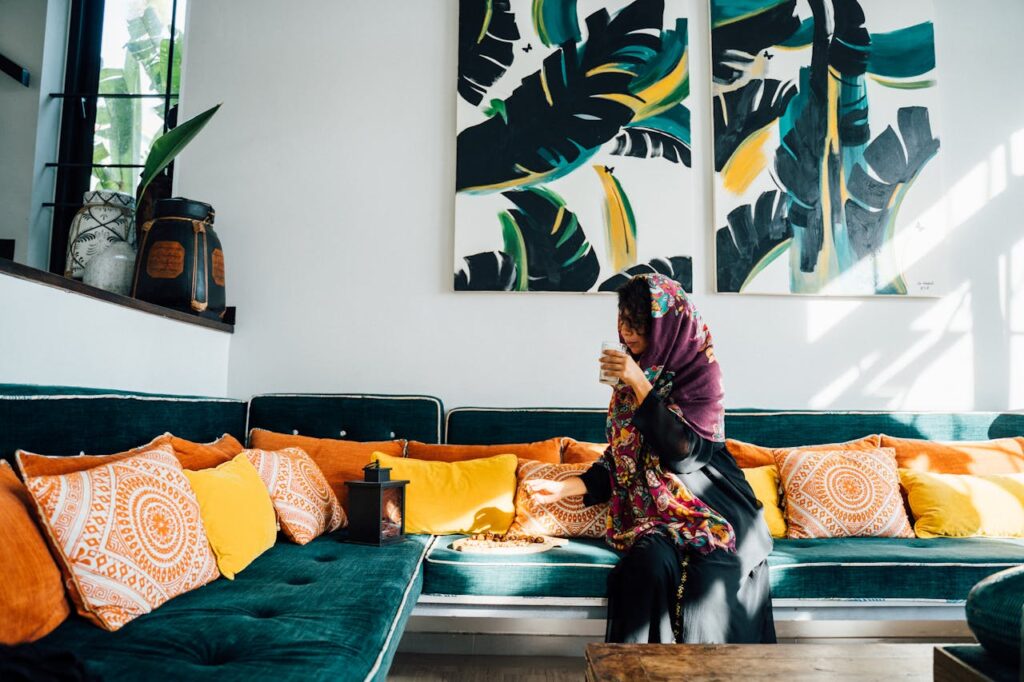Textured paint is an exciting way to bring dimension, character, and visual interest to your walls. More than just a design element, it can hide imperfections, add durability, and transform a room into a unique and stylish space. Here’s everything homeowners need to know about textured paint, from types and techniques to application tips and room-specific ideas.Types of Textured Paint for Your Home
1. Smooth Texture Paint
Smooth texture paint has a slightly grainy feel and adds a soft dimension without an overly rough surface. It’s versatile and can fit in both modern and traditional spaces.
2. Sand Texture Paint
Sand texture paint contains fine particles of sand that create a subtle yet visible roughness. It’s great for a natural, earthy look, perfect for entryways or living rooms with rustic decor.
3. Popcorn or Rough Texture Paint
Typically used on ceilings, popcorn texture has a coarse, raised look that helps with sound absorption. It’s a classic option but can make spaces feel smaller, so it’s best used selectively.
4. Knockdown Texture
This style creates a stucco or plastered effect, giving walls a Mediterranean-inspired look. Knockdown texture is applied, then partially flattened, creating a soft, dimpled pattern that’s visually interesting but not too heavy.
5. Orange Peel Texture
Named for its resemblance to an orange peel’s surface, this texture is subtle, with a soft, pitted look that works well in almost any room. It provides just enough interest without overpowering the space.
6. Faux Finish Textures
Faux finishes mimic other materials like marble, concrete, or leather. They require more skill to apply but add a luxurious, high-end look to walls, ideal for accent walls or formal spaces.
Application Techniques for Textured Paint
1. Brush and Roller Application
Using a specialty roller with a thick nap or texture will help create a consistent, raised pattern on your walls. Textured rollers are ideal for covering larger areas quickly and evenly.
2. Trowel and Sponge Techniques
For more intricate textures, applying paint with a trowel, sponge, or brush can create unique patterns. Sponging adds subtle texture, while troweling can mimic plaster or stucco effects.
3. Spray Texture Application
A sprayer can apply texture quickly and evenly, especially for popcorn or orange peel effects. It requires skill to get an even application but is excellent for large walls or ceilings.
4. Layering Paint for Faux Finishes
Faux finishes require multiple layers to achieve a realistic look. Techniques like color washing, sponging, or rag rolling help mimic textures like marble or suede. This is best done with patience and precision for a high-end result.
Tips for Using Textured Paint Successfully
1. Prep Your Wall Surface
While textured paint can hide minor imperfections, it’s best to start with a clean, smooth surface for optimal results. Fill in any large holes or cracks beforehand.
2. Test on a Small Area
If you’re unsure about a texture, try a small section first to see if you like the look and feel. Different lighting can change the appearance of the texture, so check it throughout the day.
3. Use Quality Tools
Textured paint requires specific tools like thick-nap rollers, trowels, or specialty brushes for the best results. Investing in quality tools will help ensure an even, professional finish.
4. Apply in Layers if Needed
If you’re looking for a more pronounced texture, apply multiple thin layers instead of one thick coat. This will give you more control and help the texture look even.
Room-Specific Ideas for Textured Paint
Living Room
Consider a knockdown or faux finish texture to create a statement wall in the living room. Choose neutral tones to maintain flexibility with your decor while adding subtle sophistication.
Bedrooms
For a bedroom, go with a softer texture like smooth or sand finish to keep the space cozy and inviting. Earthy colors work well with textured paint for a calming vibe.
Kitchens and Bathrooms
In kitchens or bathrooms, use textured paint to add style but choose washable, moisture-resistant options for durability. Orange peel or sand textures are popular for these spaces.
Hallways and Entryways
Textured paint in hallways can make these high-traffic areas look polished and resistant to daily wear. Sand texture works well here for durability and style.
Accent Walls
For an accent wall, experiment with bolder textures like faux finishes or knockdown to create a focal point. A well-chosen texture can make artwork or decor stand out even more.
Maintenance and Care for Textured Walls
Textured walls require a bit more care than smooth walls. Dust them regularly to prevent buildup, and when cleaning, avoid abrasive scrubbing, which can damage the paint. Use a soft cloth and mild detergent for spot cleaning.

